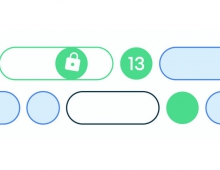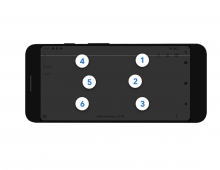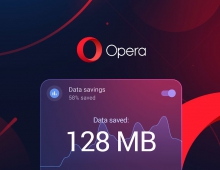
Android Becomes Leading Smart Phone Platform
Research firm Canalys said on Monday that Google's Android overtook long-time market leader, Nokia's Symbian, as the most popular smartphone platform in the fourth quarter.
According to the firm's final Q4 2010 global country-level smart phone market data, shipments of Android-based smart phones reached 32.9 million, while devices running Nokia's Symbian platform trailed slightly at 31.0 million worldwide. But Nokia did retain its position as the leading global smart phone vendor, with a share of 28%. The fourth quarter also saw the worldwide smart phone market continue to soar, with shipments of 101.2 million units representing year-on-year growth of 89%. The final quarter took shipments for the year to fractionally below 300 million units, with an annual growth rate of 80% over 2009 (see table below).

In Q4 2010, volumes of Google OS-based smart phones (Android, OMS and Tapas) were again boosted by strong performances from a number of vendors, notably LG, Samsung, Acer and HTC, whose volumes across these platforms grew 4,127%, 1,474%, 709% and 371% respectively year-on-year, Canalys said. HTC and Samsung together accounted for nearly 45% of Google OS-based handset shipments.
"2010 has been a fantastic year for the smart phone market. After a difficult 2009, the speed with which the market has recovered has required real commitment and innovation from vendors and they have risen to the challenge," said Canalys VP and Principal Analyst Chris Jones. "But vendors cannot afford to be complacent. 2011 is set to be a highly competitive year with vendors looking to use new technology, such as dual-core processors, NFC and 3D displays, to differentiate their products and maintain value."
At a regional level, Europe, the Middle East and Africa (EMEA) remained the largest market, with shipments totalling 38.8 million and a year-on-year growth rate of 90%. Nokia continued to lead in EMEA and Asia Pacific, but in 2010 it was overtaken by RIM in Latin America, which shipped over a million more units than Nokia in Q4 2010. The vendor was particularly helped by the popularity of its mid-range smart phones, such as its Curve family of devices.
The United States continued its reign as the largest country market in terms of shipments, at more than double the size of the Chinese smart phone market. RIM recaptured first place from Apple, as the latter experienced its usual US seasonal dip, and RIM benefited from the first full quarter of shipments for the BlackBerry Torch. HTC successfully maintained its third-place ranking in the US for the third consecutive quarter, driven by its speed to market with the latest Android updates and new Windows Phone 7 devices.
"The US landscape will shift dramatically this coming year, as a result of the Verizon-Apple agreement," said Canalys Analyst Tim Shepherd. "Verizon will move its focus away from the Droid range, but the overall market impact will mean less carrier-exclusive deals, while increasing the AT&T opportunity for Android vendors, such as HTC, Motorola and Samsung." Android was by far the largest smart phone platform in the US market in Q4 2010, with shipments of 12.1 million units - nearly three times those of RIM's BlackBerry devices. Windows Phone 7 devices appeared too late in the quarter to take full advantage of holiday season purchasing. As a result, Microsoft lost share in the United States, from 8% in Q4 2009 to 5% in Q4 2010.

In Q4 2010, volumes of Google OS-based smart phones (Android, OMS and Tapas) were again boosted by strong performances from a number of vendors, notably LG, Samsung, Acer and HTC, whose volumes across these platforms grew 4,127%, 1,474%, 709% and 371% respectively year-on-year, Canalys said. HTC and Samsung together accounted for nearly 45% of Google OS-based handset shipments.
"2010 has been a fantastic year for the smart phone market. After a difficult 2009, the speed with which the market has recovered has required real commitment and innovation from vendors and they have risen to the challenge," said Canalys VP and Principal Analyst Chris Jones. "But vendors cannot afford to be complacent. 2011 is set to be a highly competitive year with vendors looking to use new technology, such as dual-core processors, NFC and 3D displays, to differentiate their products and maintain value."
At a regional level, Europe, the Middle East and Africa (EMEA) remained the largest market, with shipments totalling 38.8 million and a year-on-year growth rate of 90%. Nokia continued to lead in EMEA and Asia Pacific, but in 2010 it was overtaken by RIM in Latin America, which shipped over a million more units than Nokia in Q4 2010. The vendor was particularly helped by the popularity of its mid-range smart phones, such as its Curve family of devices.
The United States continued its reign as the largest country market in terms of shipments, at more than double the size of the Chinese smart phone market. RIM recaptured first place from Apple, as the latter experienced its usual US seasonal dip, and RIM benefited from the first full quarter of shipments for the BlackBerry Torch. HTC successfully maintained its third-place ranking in the US for the third consecutive quarter, driven by its speed to market with the latest Android updates and new Windows Phone 7 devices.
"The US landscape will shift dramatically this coming year, as a result of the Verizon-Apple agreement," said Canalys Analyst Tim Shepherd. "Verizon will move its focus away from the Droid range, but the overall market impact will mean less carrier-exclusive deals, while increasing the AT&T opportunity for Android vendors, such as HTC, Motorola and Samsung." Android was by far the largest smart phone platform in the US market in Q4 2010, with shipments of 12.1 million units - nearly three times those of RIM's BlackBerry devices. Windows Phone 7 devices appeared too late in the quarter to take full advantage of holiday season purchasing. As a result, Microsoft lost share in the United States, from 8% in Q4 2009 to 5% in Q4 2010.





















